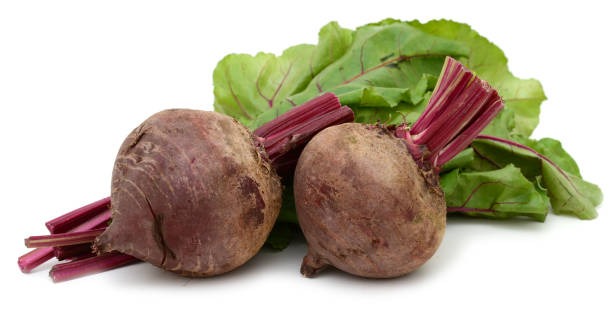Spices are more than just flavor enhancers; they carry centuries of tradition and healing wisdom. Among the many treasures of the spice world, sumac spice and cloves stand out for their unique taste profiles and incredible health benefits. Whether you’re an adventurous cook or someone interested in natural remedies, these two spices deserve a spot in your kitchen cabinet. In this blog, we will discuss the flavor and versatile uses in recipes.
Sumac spice is more than just a flavor booster—it’s also packed with nutrients and antioxidants:
Rich in Vitamin C – Supports immune health and skin vitality.
Anti-inflammatory properties – Helps reduce inflammation in the body.
Antioxidant powerhouse – Protects cells from damage caused by free radicals.
Digestive aid – Traditionally used to soothe digestive issues and improve gut health.
Cloves are famous not only for their bold flavor but also for their healing properties:
Oral health support – Clove oil has been used for centuries to relieve toothaches.
High in antioxidants – Helps fight oxidative stress and supports overall health.
Anti-microbial properties – It may help fight bacteria and boost immunity.
Improves digestion – Stimulates digestive enzymes and reduces bloating.
Pain relief – Contains eugenol, a natural compound with anti-inflammatory effects.
Sumac is highly versatile in the kitchen. Here are some delicious ways to use it:
Sprinkle on salads for a lemony kick.
Season grilled meats and fish to balance flavors.
Mix with olive oil and herbs as a marinade.
Add to hummus or yogurt dips for a tangy twist.
Top roasted vegetables for a burst of freshness.
Quick Recipe: Sumac Salad Dressing
2 tbsp olive oil
1 tsp sumac
Juice of half a lemon
Pinch of salt and pepper
Whisk together and drizzle over fresh greens or grilled veggies.
It bring warmth and richness to both sweet and savory dishes. Here are some popular uses:
Add to curries, stews, or rice for depth of flavor.
Simmer in mulled wine or cider for a festive aroma.
Blend into spice mixes like garam masala or pumpkin spice.
Use in baking for cookies, cakes, and holiday treats.
Flavor teas and coffee with a warm, soothing touch.
Quick Recipe: Clove-Infused Tea
2 cups water
3–4 cloves
1 cinnamon stick
1 tsp honey (optional)
Boil water with cloves and cinnamon, then simmer for 5 minutes. Strain. Sweeten with honey if desired.
While their flavors are different, sumac and cloves can complement each other beautifully. For instance, sumac’s tangy notes balance the rich warmth of cloves in marinades, spice rubs, or rice dishes. Together, they create a harmony of brightness and depth that enhances both meat-based and vegetarian recipes.
Sumac has been used for thousands of years, not just as a spice but also as a natural medicine. Ancient Greeks and Romans used it for its souring ability before lemons were widely available. In Middle Eastern culture, sumac is considered a symbol of hospitality and zest for life, often sprinkled on traditional dishes served at gatherings.
Cloves have a long history, dating back to ancient China, where they were highly prized in the spice trade. In fact, they were once worth their weight in gold. In Chinese tradition, chewing cloves was a way to freshen breath before speaking to the emperor. Over time, cloves traveled through trade routes to Europe and the Middle East, where they became essential in both cooking and healing practices.
Proper storage is key to preserving their flavor and potency:
Sumac – Store in an airtight container in a cool, dry place away from sunlight. Ground sumac should be used within a year for maximum freshness.
Cloves – Whole cloves last longer when kept in airtight jars, away from heat and moisture. Grind only as needed to retain their bold aroma.
Sometimes, you may run out of these spices, but here are some quick alternatives:
Sumac Substitute – Lemon zest or lemon juice mixed with a pinch of salt can mimic sumac’s tangy flavor in recipes.
Clove Substitute – Allspice, nutmeg, or cinnamon can provide warmth similar to cloves, though not as strong.
While both spices are safe in culinary amounts, it’s good to know a few precautions:
Sumac – Individuals with allergies to cashews or mangoes (both belonging to the same plant family) should exercise caution, as reactions are possible.
Cloves – Excessive use of clove oil or large amounts of cloves can cause stomach irritation. Pregnant women and people with bleeding disorders should consult a doctor before consuming medicinal amounts of cloves.
Here are a few simple ideas to combine both sumac and cloves in everyday cooking:
Cook basmati rice with 2–3 whole cloves, a cinnamon stick, and a little salt.
Once done, sprinkle sumac on top before serving for a tangy finish.
Olive oil, garlic, ground cloves, sumac, and a hint of honey create an exceptional marinade for chicken or lamb.
Roast carrots, sweet potatoes, or beets with olive oil, ground cloves, cumin, and coriander.
Once roasted, sprinkle with sumac for a citrusy brightness.
Sumac is low in calories but high in antioxidants, flavonoids, and polyphenols. These compounds help reduce oxidative stress, making it a great addition to a health-conscious diet. It also contains small amounts of vitamin C, iron, and fiber.
Cloves are rich in manganese, a mineral that supports bone health and metabolism. They also contain vitamin K, vitamin C, and fiber. Most importantly, their high concentration of eugenol gives cloves powerful anti-inflammatory and antibacterial properties.
In traditional medicine, sumac tea has been used to soothe sore throats, reduce fever, and support urinary health. Some cultures also used sumac poultices to aid in wound healing due to its natural antiseptic properties.
Cloves have long been a staple of Ayurveda and traditional Chinese medicine. Clove oil is widely used for toothaches, sore throats, and even as a natural insect repellent. Its warming effect makes it popular in massage oils for muscle relief.
Middle Eastern Cuisine (Sumac): Used in fattoush salad, kebabs, and za’atar spice blends.
Indian Cuisine (Cloves): A core spice in biryanis, chai, and garam masala.
North African Cuisine: Both sumac and cloves appear in tagines, adding tang and warmth.
European Cuisine (Cloves): Popular in mulled wine, spiced cookies, and festive desserts.
Less is More – Cloves have a robust flavor, so use sparingly to avoid overpowering a dish.
Balance the Tang – Sumac can replace lemon or vinegar, but always taste as you go to achieve the right acidity.
Whole vs. Ground – Whole cloves release flavor slowly, making them ideal for simmering dishes. Ground sumac provides instant brightness, making it perfect for sprinkling.
Pairing – Use sumac for freshness and cloves for depth; together, they create a layered flavor experience.
Sumac spice and cloves are not just kitchen staples—they are treasures of global cuisine and wellness traditions. They brighten, warm, and heal in ways that few ingredients can. Whether you’re experimenting with new recipes, sipping on spiced tea, or exploring natural remedies, these two spices bring both flavor and health to your table.
By incorporating sumac and cloves into your cooking routine, you’re not only enhancing the taste but also embracing centuries of tradition and wellness in every bite.




Want to add a comment?